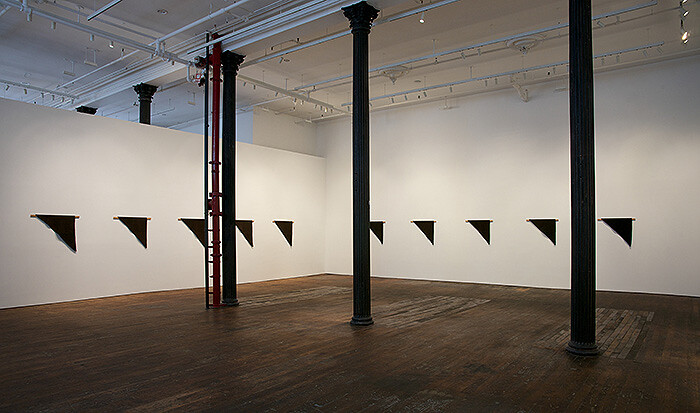Categories
Subjects
Authors
Artists
Venues
Locations
Calendar
Filter
Done
June 7, 2017 – Review
Mel Bochner’s “Voices”
Kim Levin

At a moment when all kinds of anxieties can be tweaked by a tweeting president, Mel Bochner—a highly respected first-generation Conceptualist—has found his voice. Or perhaps I should say, these uneasy times have caught up with Bochner’s word-based art of language and ideas.
Other founding Conceptualists of the late 1960s— Robert Barry, Douglas Huebler, Joseph Kosuth, Lawrence Weiner—formulated their immaterial ideas and the stenciled or neon words to articulate them early, and stuck with them, developing and refining them. In those days, Bochner’s dematerialized works questioned the measurement of space. When his early “Theory of Sculpture” series (1968-73)—made with numbers, lines, circles, white stones, and walnuts arrayed on the floor—was re-shown at Peter Freeman in 2013, Roberta Smith in the New York Times called the pieces “elegant thought puzzles.”
But shortly after the turn of our century, Bochner went backwards to move forward. He embraced the old material-based act of painting on canvas. He began making enigmatic, hotly expressionistic, and sometimes illegible words with brushy, runny, dripping oil paint. At the time, some of us were puzzled by this apparently retrograde move by a highly theoretical artist who had studied philosophy. Was he still making Conceptual art? Or was he turning to …
October 13, 2014 – Review
Helen Mirra’s “Waulked”
Media Farzin

The wool of a black sheep, I was surprised to learn, isn’t black at all—it comes in numerous subtle variations of dark brown. Helen Mirra’s recent exhibition “Waulked,” offers several such lessons; seemingly random observations about organic materials, traditional crafts, and what could be called “more grounded” ways of being in the world.
The show’s centerpiece is a room full of Waulked Triangles (all 2013), identically shaped pieces of dark cloth draped over cedar wood supports. Each strip combines the wool of two different black sheep (which are identified in the works’ titles by location). Up close, the Triangles are engagingly tactile and reveal subtle differences in texture and color. Some portions are smooth and evenly covered with white wool fuzz; others are nubby, knotted, or glossy. There are sections that appear to be the wool of an individual sheep, and in some pieces, thin strands dyed with the inks of wild mushrooms delicately underline interwoven portions. The technique is identical in each Triangle—an apparently straightforward weaving of warp and weft—but the gradual accumulation of differences in the wool brings the source of each object’s material, in its individual and living reality, into intense focus.
“Waulking” is an obsolete term for finishing …
